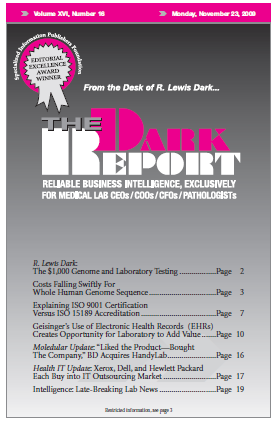CEO SUMMARY: Every health reform proposal makes it a high priority to implement a universal electronic medical record (EHR). Because lab test data is the essential component of a successful EHR, laboratory managers and pathologists may soon have a once-in-a-lifetime opportunity to use EHR implementation to boost the value to lab testing services. This is …
Geisinger’s Use of EHR Creates Opportunity for Lab to Add Value Read More »
To access this post, you must purchase The Dark Report.


